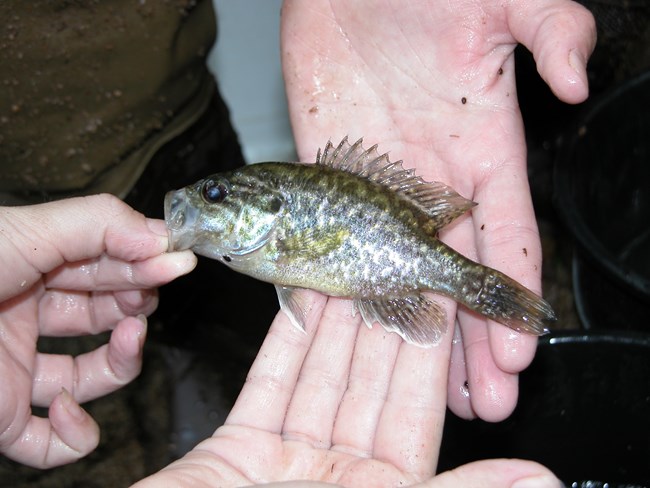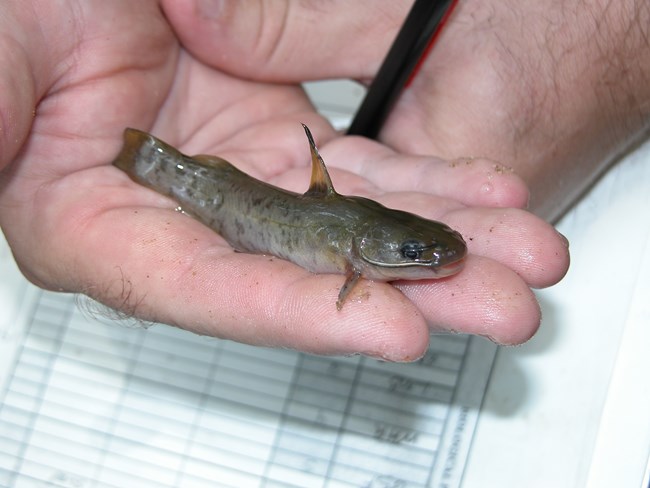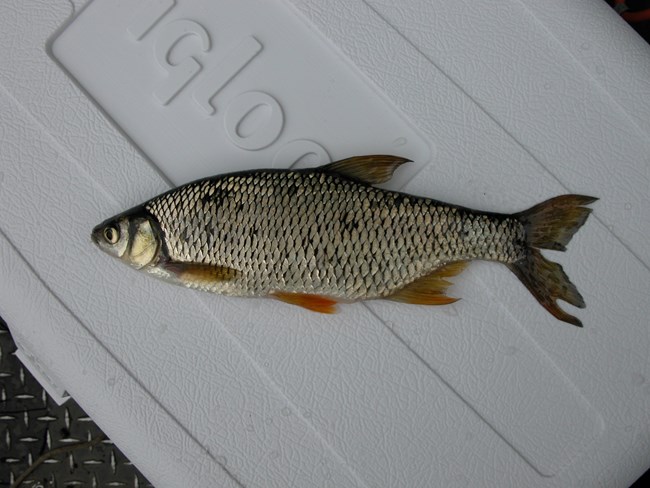|
Ninety-Six National Historic Site encompasses over 1,000 acres and its water sources are part of the Saluda River drainage (Santee River system). There are two ponds found at this Historic Site, the Star Fort Pond, and a small marsh along with many small streams. Many varied species of fish live in these ponds but here are a few you might catch at the Star Fort Pond. 
NPS/Mark Scott Warmouth Sunfish (Lepomis gulosus)Diet: Warmouth's are sight-feeders (this means they eat or try to eat everything they see) that feed mostly on insects, crayfish, and smaller fish. 
NPS/Mark Scott Flat Bullhead Catfish (Ameiurus platycephalus)Diet: Flat Bullheads eat aquatic invertebrates such as crayfish, freshwater mussels, snails, insects, fish eggs, plants, and other fish. 
NPS/Mark Scott Golden Shiner (Notemigonus crysoleaucas)Diet: Plankton and small crustaceans |
Last updated: July 19, 2023
